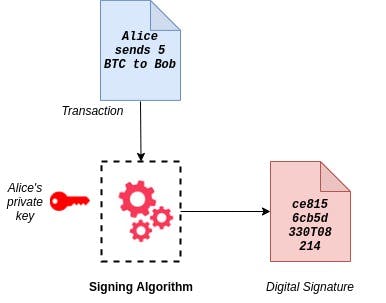From Private Keys to Public Keys: An Insider's Look at the Cryptographic Process"
cryptocurrency
what is Private key?
A private key is a secret piece of data that is used to access and authorize transactions on a blockchain network. It is a unique, alphanumeric code that is generated and stored on your device (e.g., computer, smartphone) when you create a blockchain wallet.
what is Public key?
A public key, is a unique, alphanumeric code that is derived from a private key and is used to identify a specific blockchain wallet on a network. It is made available to the public and is used to receive cryptocurrency or other digital assets.
What Private and Public key can do ?
Private and public keys work together to secure and facilitate transactions on a blockchain network. The private key is used to sign transactions, which verifies that they are authentic and authorized by the owner of the private key. The public key is used to verify the authenticity of the transaction by checking the signature against the public key.
Uses of Private and Public key.
Generating a wallet.
Signing transactions.
Verifying transactions.
Security.
Public keys: blockchain addresses.
Here's an example of how private and public keys work in a blockchain network:
Alice creates a blockchain wallet, and is given a unique private key. She also generates a corresponding public key, which is used to create a blockchain address that can be used to receive and send cryptocurrency.
Alice wants to send 5 Bitcoin to Bob's wallet. She inputs Bob's blockchain address into the "send" field of her wallet and enters the amount of Bitcoin she wants to send.

Before the transaction can be processed, Alice's wallet will prompt her to enter her private key as a security measure. This verifies that Alice is the owner of the wallet and has authorized the transaction.
Once Alice has entered her private key and the transaction has been signed, it is broadcast to the network for verification.
The network verifies the authenticity of the transaction by checking the signature against Alice's corresponding public key. If the signature is valid, the transaction is considered authentic and is added to the blockchain.
Bob's wallet receives the 5 Bitcoin and updates his balance accordingly.
In this example, Alice's private key was used to sign and authorize the transaction, while her public key was used to verify the authenticity of the transaction. Private and public keys work together to secure and facilitate transactions on a blockchain network.

Why are private and public keys important for security?
Private keys are the most important element of blockchain security. They should be kept secret and protected at all times, as anyone with access to your private key will have the ability to access and authorize transactions on your wallet.
Public keys, on the other hand, are not meant to be kept secret. They are publicly available and are used to identify and verify the source of a transaction. They are also used to create blockchain addresses, which can be shared with others to receive cryptocurrency or other digital assets.
